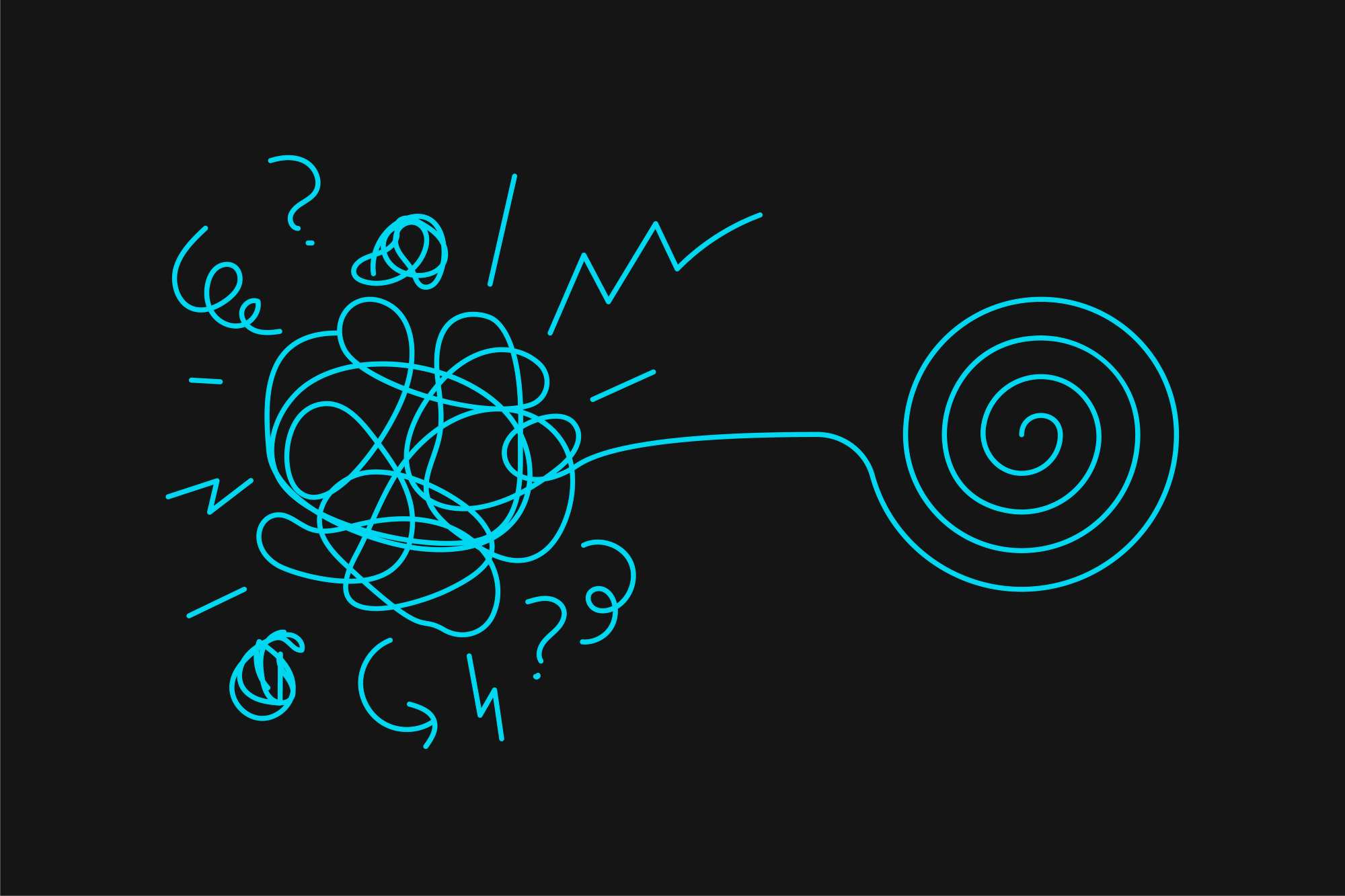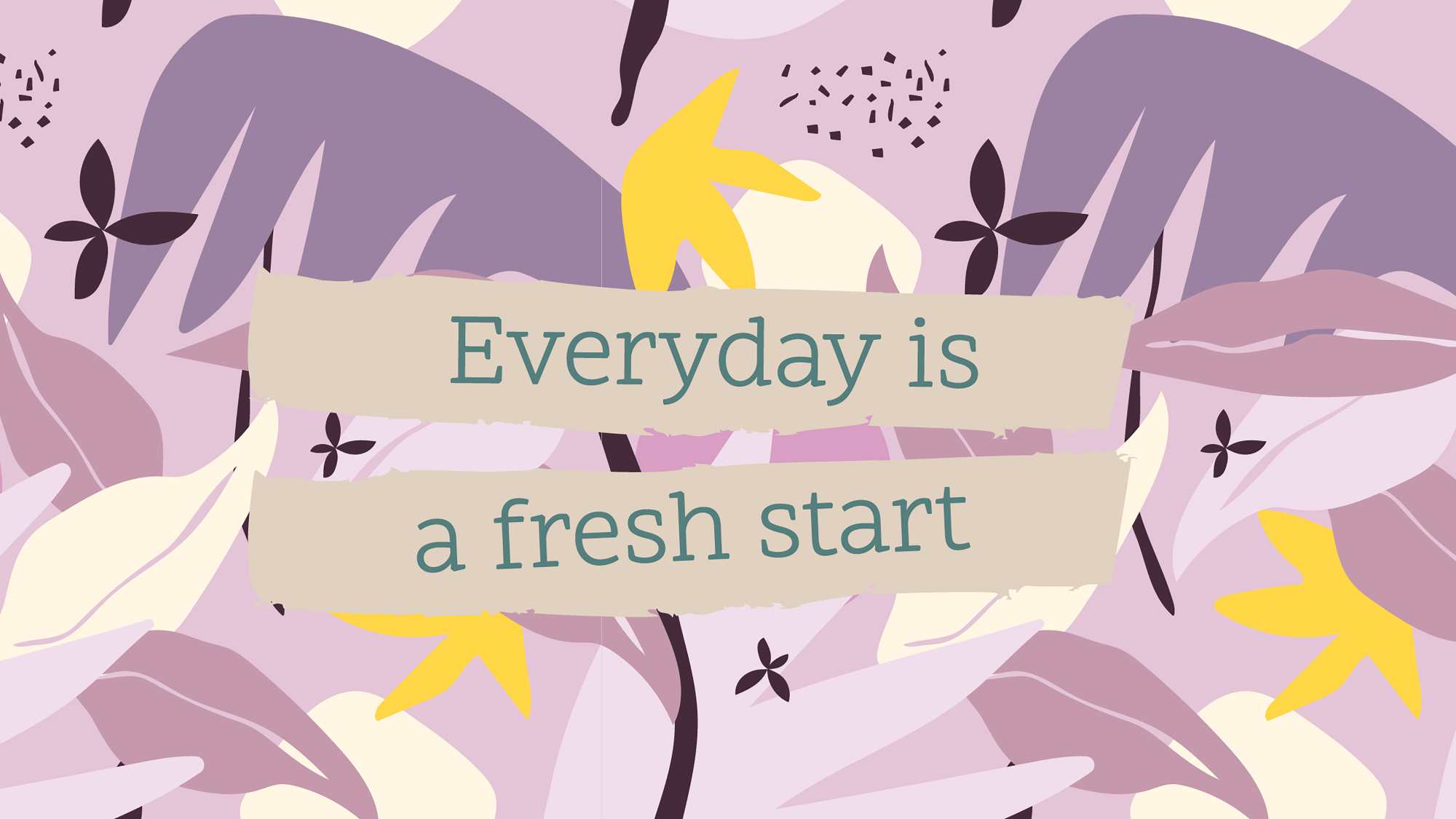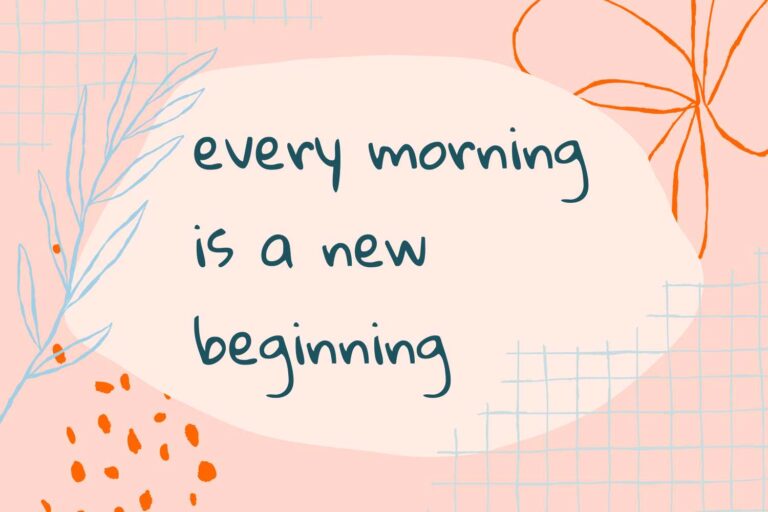7 reframes that turn your inner critic into your biggest supporter
What if that voice in your head that tears you apart could become the most powerful motivator you’ve ever had?
Inner critic is sneaky. At first, it seems like it’s helping – pushing you to do better, holding you accountable, keeping you from “slacking off.” But in reality? Too much self criticism destroys your confidence, kills motivation, and makes you more likely to procrastinate or give up.
The thing about self criticism is that it’s not actually trying to destroy you. It’s trying to protect you from failure, rejection, and disappointment. But somewhere along the way, it got confused and started thinking the best defense was a brutal offense.
Your inner critic thinks if it beats you up first, the world can’t hurt you as badly. If it points out every flaw, you won’t be blindsided by criticism from others. If it keeps you focused on what’s wrong, maybe you’ll finally fix everything and be safe.
Except that’s not how it works.
That harsh voice isn’t making you better – it’s making you smaller. It’s not pushing you toward success – it’s paralyzing you with the fear of not being perfect. And it’s definitely not protecting you from pain – it’s creating pain every single day.
Why self criticism doesn’t work and what to do instead
Before we go into the reframes, let’s get real about why inner critic fails as a motivator:
- It creates shame. Shame paralyzes instead of energizing.
- It feeds perfectionism. You end up avoiding tasks because nothing feels “good enough.”
- It trains your brain to fear mistakes. Which blocks learning and growth.
- It lowers self-trust. If you’re always putting yourself down, you stop believing in yourself.
The alternative? Reframing. You don’t silence that voice completely – that never works anyway. Instead, you transform it from a brutal drill sergeant into a wise coach. Someone who sees what needs work and addresses it with clarity, not cruelty.
Here are seven specific ways to turn your inner critic from a weapon that hurts into a tool that builds. If you’re struggling to identify the specific harsh thoughts that keep you stuck, How to identify limiting beliefs that sabotage you walks you through recognizing these hidden patterns.

1. From “I’m not good enough” to “I’m still learning and improving”
When your inner critic says:
“You’re not good enough at this. Look how far behind you are. Everyone else figured this out already. You should be better by now. What’s wrong with you?”
Your new response:
“I’m right in the middle of getting better at this. I’m not supposed to be an expert yet – I’m supposed to be learning. Every person who’s good at this was once exactly where I am now.”
Why this transformation changes everything:
The first version treats your current skill level like a life sentence. The second version treats it like a GPS location – just where you happen to be right now on your way to somewhere else.
When you say “I’m not good enough,” you’re making a judgment about your identity. When you say “I’m getting better,” you’re describing a process you’re actively engaged in. One feels hopeless, the other feels hopeful.
Daily practice:
For the next two weeks, every time you catch yourself thinking “I’m bad at this,” immediately add “yet” to the end of the sentence. Then ask yourself: “What’s one specific thing I could practice today that would make me slightly better at this?”
This isn’t about lying to yourself or pretending you’re already amazing. It’s about telling the truth – you’re someone who’s actively working to improve, and that’s exactly what growth looks like.
This shift from fixed to growth thinking is powerful. How to develop a growth mindset: 15 strategies that actually work explores this mindset change in depth.
2. From “I always mess up” to “I’m learning what works”
When your inner critic says:
“You always screw this up. You can’t do anything right. There’s obviously something wrong with you. Normal people don’t struggle with this basic stuff.”
Your new response:
“I’m in the process of figuring out what works for me. Every attempt gives me information I can use to adjust my approach. I’m not failing – I’m troubleshooting.”
Why this transformation changes everything:
The critical version treats every mistake as evidence that you’re broken. The reframe treats every mistake as data collection. Instead of being someone who “can’t get anything right,” you become someone who’s actively experimenting and learning.
Scientists don’t call it “failure” when an experiment doesn’t produce the expected results – they call it information. When you apply that same mindset to your own growth, everything changes.
How to build this habit:
Start a “learning log” that you update for just five minutes every night. Write down one thing that didn’t go as planned that day and what specific information you gained from it. Then write one small adjustment you’ll try tomorrow based on what you learned.
Example: “Today I learned that trying to focus on important work right after lunch makes me sluggish and distracted. Tomorrow I’ll schedule challenging tasks for the morning and use post-lunch time for easier admin work.”
If perfectionism is driving your self criticism, How to overcome perfectionism and start living authentically provides specific strategies for breaking free from this pattern.

3. From “I should have known better” to “now I know what to do next time”
When your inner critic says:
“How could you be so stupid? This was so obvious. You should have seen this coming. Anyone with half a brain would have handled this better.”
Your new response:
“I made the best decision I could with the information I had at the time. Now I have new information that will help me make better decisions going forward. This is exactly how learning works.”
Why this transformation changes everything:
“Should have known better” is an impossible standard. You literally cannot go back in time and make a decision with knowledge you didn’t have yet. All you can do is take the new information and apply it to future decisions.
This reframe also recognizes that growth requires making mistakes with incomplete information. If you only made decisions you were 100% certain about, you’d never grow or take any meaningful risks.
Try this approach:
When you catch yourself spiraling in “should have known better” thinking, write down these three questions and answer them honestly:
- What information do I have now that I didn’t have when I made that decision?
- What will I do differently next time I’m in a similar situation?
- What would I tell a close friend who was beating themselves up about the exact same thing?
That third question is especially powerful because it helps you access the compassion you readily give others but withhold from yourself.
4. From “I can’t do this” to “I haven’t figured out how to do this yet”
When your inner critic says:
“You can’t do this. You’ve tried and failed. This is just not something you’re capable of. You should give up and try something easier where you won’t embarrass yourself.”
Your new response:
“I haven’t figured out how to do this yet, but that doesn’t mean it’s impossible. Maybe I need a different approach, more practice, additional skills, or help from someone else. This is a puzzle I’m still solving.”
Why this transformation changes everything:
“I can’t” shuts down all possibilities. “I haven’t figured out how yet” opens them up. The first version treats your current ability level as permanent. The second version treats it as a starting point.
This tiny word change – “yet” – completely rewires your brain from fixed mindset to growth mindset. You stop seeing challenges as proof of your limitations and start seeing them as interesting problems to solve.
What to do next:
When you hit a wall with something difficult, resist the urge to declare defeat. Instead, complete this sentence: “I can’t do this yet, but I could try…” and then brainstorm at least three different approaches.

5. From “I’m so behind everyone else” to “I’m on my own timeline”
When your inner critic says:
“Everyone else is so much further ahead. You’re way behind where you should be at your age. You’ve wasted so much time. You’ll never catch up to where you’re supposed to be.”
Your new response:
“Everyone’s path unfolds at different speeds and follows different routes. I’m exactly where I need to be to learn what I need to learn. My timeline is mine, not anyone else’s.”
Why this transformation changes everything:
Comparison-based criticism assumes there’s some universal timeline everyone should follow. But that timeline doesn’t exist. Some people find their calling at 20, others at 50. Some people have linear paths, others zigzag their way to success.
When you stop measuring your progress against other people’s highlight reels and start measuring it against where you actually started, you’ll discover you’ve been making more progress than you realized.
Here’s how to apply this:
For the next month, whenever you catch yourself comparing your journey to someone else’s, immediately ask yourself: “How have I grown compared to where I was six months ago?”
Write down three specific ways you’ve improved, learned, or developed during that time. This trains your brain to notice your actual progress instead of focusing on perceived gaps between you and others.
6. From “I’m so lazy and undisciplined” to “I need to work with my patterns, not against them”
When your inner critic says:
“You’re so lazy. You have no willpower. You can’t stick to anything. Other people are so much more disciplined. You’re just not cut out for success.”
Your new response:
“I have specific patterns of energy, motivation, and focus that work better under certain conditions. Instead of fighting against how I naturally function, I need to design my life around what actually works for me.”
Why this transformation changes everything:
“Lazy” is a useless label that doesn’t give you anywhere to go. Understanding your patterns gives you actionable information. Maybe you’re naturally more focused in the morning. Maybe you work better with deadlines and accountability. Maybe you need more breaks than other people, or different types of motivation.
These aren’t character flaws – they’re data points about how you function best. When you work with your natural patterns instead of against them, what looks like “laziness” often transforms into sustainable productivity.
Put this into action:
For two weeks, track your energy and focus levels throughout the day. Notice when you naturally feel motivated and when you struggle. Pay attention to which environments help you focus and which ones distract you.
Then start scheduling your most important work during your peak energy times instead of forcing yourself to work against your natural rhythms.

7. From “I’m such a failure” to “I’m building my resilience and learning what I can handle”
When your inner critic says:
“You’re such a failure. Nothing ever works out for you. You always disappoint people. You might as well stop trying because you’ll just mess it up again anyway.”
Your new response:
“I’m someone who tries things, and sometimes they don’t work out as planned. Each time I get back up and try again, I’m building my capacity to handle challenges and proving to myself what I’m actually capable of.”
Why this transformation changes everything:
“Failure” makes it sound like you ARE something broken. “Building resilience” acknowledges that you’re DOING something valuable – developing one of the most important life skills there is: the ability to bounce back from setbacks.
Every time you try something and it doesn’t work out, you’re not proving you’re a failure. You’re proving you’re someone who takes risks, learns from experience, and doesn’t give up easily. That’s not weakness – that’s strength in action.
The practice:
Keep a “resilience journal” where you document not just what went wrong, but how you handled it and what you learned about your own capacity to deal with difficulty.
Include entries like: “I felt disappointed for three days, then I started researching other options” or “I was embarrassed about the mistake, but I apologized quickly and fixed it instead of hiding.”
These reframes work alongside other positive self-talk techniques. For more methods to change your inner dialogue, check out Practical guide to positive self-talk: Tips and techniques.
How to make reframes actually work
Here’s what most people get wrong about reframing – they try to force themselves to believe something that feels completely fake.
Your brain isn’t stupid. If you try to jump from “I’m terrible at this” straight to “I’m amazing at this,” your mind will reject it as obvious BS. You’ll end up feeling worse because now you’re not just bad at the original thing – you’re also bad at positive thinking.
The key is starting with reframes that feel true, even if they’re not wildly optimistic.
Instead of going from “I suck at this” to “I’m incredible,” try going to “I’m learning how to get better at this.” Your brain can accept that because it’s factually accurate.
The most powerful reframes acknowledge reality while opening up possibilities. They don’t pretend everything is fine or that you haven’t made mistakes. They just refuse to make temporary situations mean permanent things about your worth or potential.
Start with one reframe and practice it for two weeks before adding another. Your brain needs time to form new habits. Trying to change all your self-talk at once usually leads to changing none of it.

How to handle your inner critic when it fights back
Don’t be surprised when your inner critic resists these changes. It’s been “protecting” you with harsh criticism for years, and it might view kindness toward yourself as dangerous softness.
Your inner critic might say things like:
- “This positive thinking stuff is just denial.”
- “If you’re not hard on yourself, you’ll get lazy and complacent.”
- “Other people will think you’re making excuses.”
- “You need criticism to stay motivated.”
When this happens, try responding with:
“I understand you’re trying to keep me motivated and protected. But being harsh isn’t actually helping me improve – it’s making me afraid to try. I can still notice what needs work and address it without being cruel to myself about it.”
Remember, the goal isn’t to eliminate self-awareness. You still want to notice areas that need improvement. You just want to address them in a way that motivates action instead of paralysis.
Transform your inner critic into your biggest ally
Understanding these reframes intellectually won’t change anything. The transformation happens through practice, not just knowledge.
This week: Pick the one reframe that addresses your most brutal self-critical thought. Write it down somewhere you’ll see it every day.
When self criticism hits: Instead of fighting it or believing it, pause and ask: “How can I reframe this in a way that actually helps me grow?”
End of each day: Notice one moment when you spoke to yourself more kindly than usual. Celebrate that shift, even if it feels small.
The harsh voice in your head doesn’t have to stay your enemy. With consistent practice, it can become your most reliable ally – someone who notices what needs attention and addresses it with wisdom, not wounds.
You weren’t born with that critical voice. You learned it. Which means you can unlearn it and build something better in its place.
The question isn’t whether you deserve to be supported instead of attacked by your own mind. The question is: are you ready to start treating yourself like someone worth supporting?
Your inner dialogue is the longest conversation you’ll ever have. Make it one that builds you up instead of tearing you down. This work is part of building a healthier relationship with yourself overall. How to build a healthy relationship with yourself explores this transformation more deeply.

Ready to transform more than just your inner critic?
These reframes are powerful, but lasting change requires going deeper. If you’ve tried being less critical but keep slipping back into old patterns, it’s because reframes alone aren’t enough – you need a complete system for transformation.
🔥 Procrastination and productivity bundle – stop the cycle of harsh self-judgment that leads to avoidance. Build unshakeable self-discipline, master your focus, and make decisions without the mental spiral.
❤️ Self-love bundle – transform how you relate to yourself at the deepest level. Let go of old wounds, build genuine self-compassion, and create daily rituals that support who you’re becoming.
💪 Self-worth bundle – build real confidence that doesn’t crumble under pressure. Rewrite limiting beliefs, trust yourself completely, and protect your energy without guilt.
🔥 Mindset and motivation bundle – master your mental game completely. Reset limiting thought patterns, find your true direction, and step into an identity that naturally creates the life you want.
🔥 Emotional resilience bundle – stop overthinking from destroying your peace. Build unshakeable inner strength, manage stress like a pro, and become your own biggest cheerleader.
Each bundle gives you four 30-day workbooks with the step-by-step system to create lasting change – not just new thoughts, but new patterns that stick.
Choose the bundle that speaks to your biggest challenge, or get them all and transform every area of your life.
The voice in your head doesn’t have to stay your enemy. Your transformation starts now.







